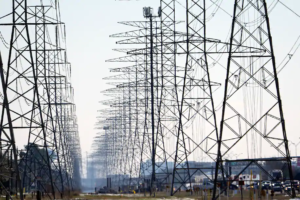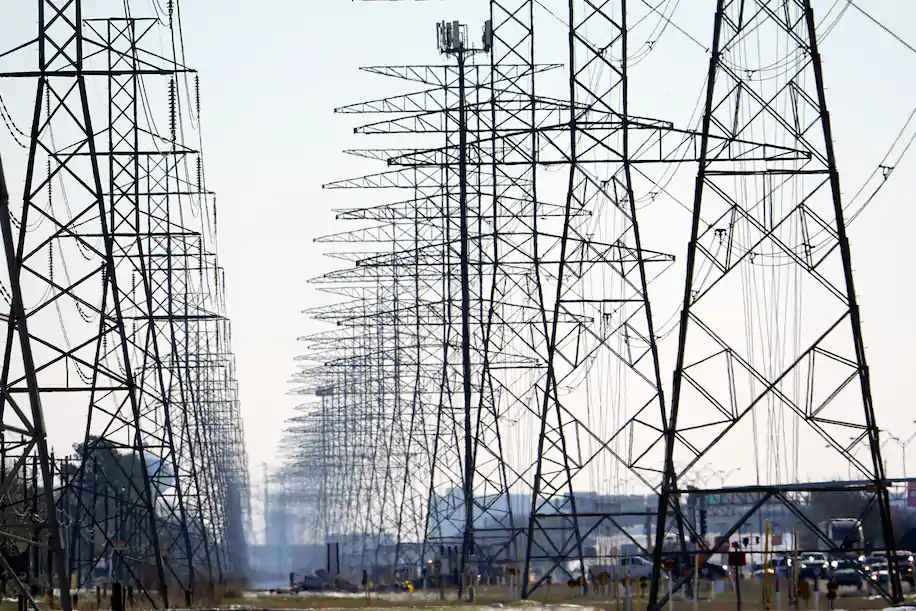 Only if he learns the lessons of past infrastructure battles
Only if he learns the lessons of past infrastructure battles
When Joe Biden selected the slogan “Build Back Better” as the theme of his presidential campaign, he drew attention to the crucial importance of repairing and enhancing the nation’s aging infrastructure. Now a month into his presidency, Biden has signaled he is ready to put a $2 trillion infrastructure plan at the center of his legislative agenda.
This comes not a moment too soon: As the devastating failure of the Texas energy grid has made clear in recent days, reinvesting in the nation’s infrastructure is an urgent need with public health and safety hanging in the balance.
But while Biden looks to deliver on his campaign promise to build back better and avert future disasters like the one we are watching unfold in Texas, the infrastructure agenda may test another campaign promise: “unity” and “bipartisanship.” Biden invited a bipartisan group of lawmakers to the White House on Feb. 11 to discuss infrastructure, without it seeming to sway the Republicans toward embracing his agenda.
This is not surprising. The history of the nation’s infrastructural development suggests that rather than bipartisanship, Biden will need to lean firmly into using the partisan power of the Democratic control of Congress to achieve his infrastructure goals. In fact, it is partisan power that made ambitious infrastructural development possible in the past. Alongside the importance of partisanship, Biden will need to recall a second lesson from past development to fully capitalize on the possibilities of rebuilding and reimagining our decaying infrastructure: consulting local communities when designing and implementing new infrastructure systems.
The nation’s most expensive and expansive public works project — the National System of Interstate and Defense Highways — is invoked by many, even President Barack Obama, as the product of bipartisan work. In reality, however, the development of the interstate highway system hinged on partisan Congressional power.
Yes, Republican President Dwight D. Eisenhower did sign the Federal-Aid Highway Act of 1956. But the legislation itself was a product of a shift in partisan control of Congress, after Democrats recaptured both houses in the 1954 midterm elections. Democratic Party leaders subsequently used their committee leadership positions to design the foundations of the interstate system. For example, Sen. Denis Chávez (D-N.M.), then chairman of the Senate Public Works Committee, advanced the general plan for a federally funded, tax-based highway system. Rep. Hale Boggs (D-La.), chairman of the House Ways and Means subcommittee on roads, worked in the lower chamber to design the specific tax mechanisms that still to this day fund the construction and maintenance of the interstate system.
With such leadership and the power afforded by Congressional majorities, Democrats blocked an alternative interstate highway proposal from Republicans and backed Eisenhower into the corner from which he signed the 1956 act that made the interstates into the highway system we travel today.
Democrats also had captured support from Republicans who wanted to share credit for an infrastructure project that would spur the national economy. A Republican Party spokesman conceded as much, telling the press that they had “failed to shake strong Democratic opposition” to their own minority interstate proposal, and would follow the majority’s lead. The interstates, in other words, were not the result of bipartisan dealmaking, but rather the product of partisan power-wielding.
Partisanship was the key to legislative success for the interstate project. But partisanship had its limits — notably, it did not guarantee that the interstate system would work well for all of the regions and communities it would reshape.
With construction underway, the benefits of the interstate system quickly became apparent. It provided affordable, tax-funded transportation open to all who wished to travel its nation-spanning routes. Manufacturers could ship their goods farther and faster, commuters could zip between cities and suburbs with ease and families could reach previously remote vacation locales.
But on the ground, the building blocks of these outcomes were hardly equitable. Put simply, officials in charge of 1960s interstate construction were more concerned with efficient long-range transportation and boosting the nation’s gross domestic product statistics than they were with protecting and enhancing local prosperity.
This priority meant that when Congress set the interstate system’s construction in motion in the late 1950s, its development soon became synonymous with destruction. Federal officials ignored the needs of local communities as they directed interstate highway planning and development. The interstate system resulted in demolished buildings, displaced residents and massive economic inequality.
The urban outcomes were devastating, especially in minority communities that officials often targeted as the first locations for interstate construction-turned-destruction. Businesses, apartment buildings and entire neighborhoods fell to the “concrete monsters,” as the interstates came to be called. In such communities, the effects were often justified with claims of “urban renewal.” It was a convenient political slogan; as historian Nathan D.B. Connolly puts it, many officials wanted to use “the interstate system to raze Negro slums whenever possible.” The interstate system’s entwined ability to boost the national economy while bisecting cities and impoverishing neighborhoods stretched from Atlanta to Los Angeles, from San Francisco to Syracuse.
These dual lessons of the interstate highway system are crucial to “building back better” today. Somewhat ironically, the dilapidated state of much of America’s highways and other infrastructure offers an opportunity for new beginnings — correcting some of the mistakes of this earlier development. As legal scholar Deborah Archer, puts it, the “interstate highway system is on the verge of transformational change as aging highways around the country are crumbling or insufficient to meet growing demand and must be rebuilt or replaced.” Urban interstate segments nationwide are being identified for possible relocation. We have a chance to undo some of the system’s damage.
And there is hope the Biden administration will take these lessons into account, recognizing both the importance of partisan power and the need for participatory input as he works to turn his infrastructure plan into a reality. Renewing the nation’s infrastructure promises to grow the national economy and prevent future disasters, like the one unfolding in Texas. If done right, this will be a broadly beneficial outcome, and Republicans will wish to share in the success, even if they don’t contribute to process.

